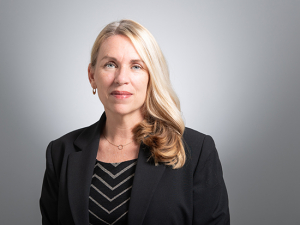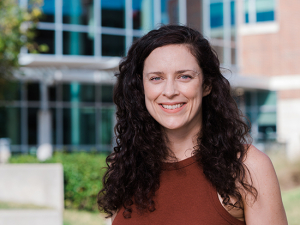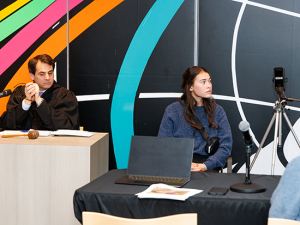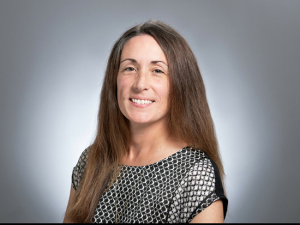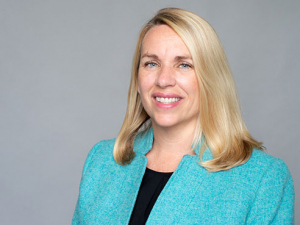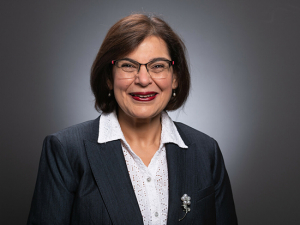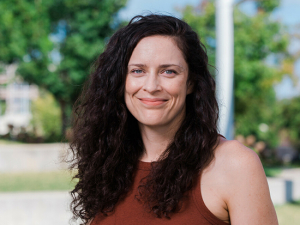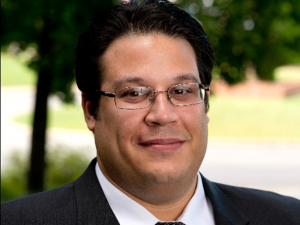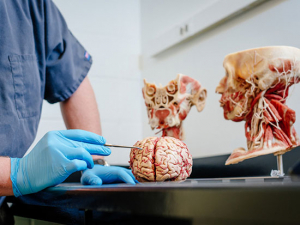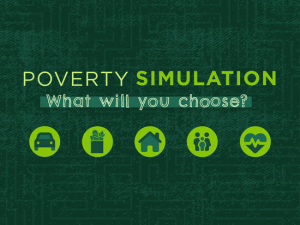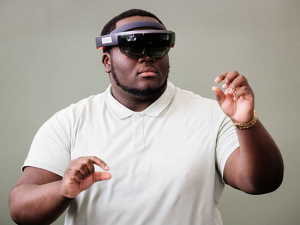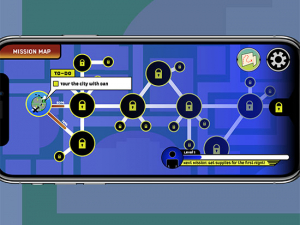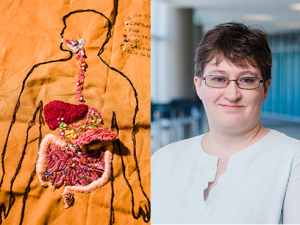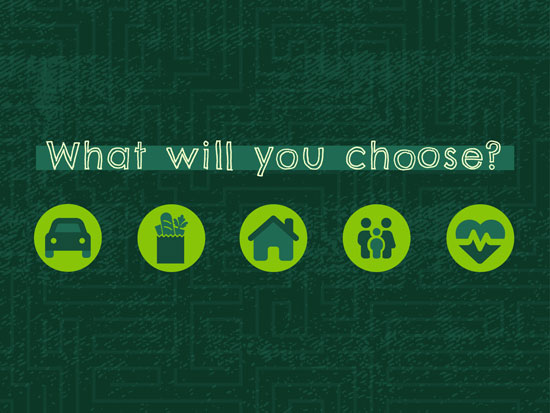 Over the past eight years, thousands of UAB students have attempted to survive for a month on $1,000. Few of them — undergraduates in social work, public health and nursing; graduate students in genetic counseling and health care administration and midwifery; aspiring professionals in medicine, dentistry and optometry; anesthesia residents and chaplains in training — find a way to make it work. And after 30 minutes or so of steadily ratcheting tension, each has shared their frustrations and reflections with trained debriefers.
Over the past eight years, thousands of UAB students have attempted to survive for a month on $1,000. Few of them — undergraduates in social work, public health and nursing; graduate students in genetic counseling and health care administration and midwifery; aspiring professionals in medicine, dentistry and optometry; anesthesia residents and chaplains in training — find a way to make it work. And after 30 minutes or so of steadily ratcheting tension, each has shared their frustrations and reflections with trained debriefers.
The experience is called the Poverty Simulation, and “it is incredibly difficult to do,” said Dawn Taylor Peterson, Ph.D., director of the Office of Interprofessional Simulation, which runs these sessions. “You have to choose: Are you going to buy a new tire so you can get to work, or take your dog to the vet?” (Or, for lack of money, do neither, losing job and pet.) Another situation: “You have to pay a babysitter, but your paycheck won’t arrive for several more days,” Peterson said. “What are you going to do?”
Pondering these types of questions as a student can shape future actions once they are in the workforce, says Lynn Holt, director of the master’s program in Genetic Counseling in the School of Health Professions. Holt has served as a debriefer in the Poverty Simulation at UAB since 2015. “It falls under the advocacy lens,” she said. “We think we’ve done a great job to get a genetic test down to $200; but if you have to choose between getting a test and heating your apartment, what would you do?
The Office of Interprofessional Simulation, or OIPS, is one of three distinct offices within the Center for Interprofessional Education and Simulation — CIPES, which is itself housed in the Office of the Provost. The other two CIPES offices are the Office of Interprofessional Curriculum and the Office of Standardized Patient Education. Learn more here.
“That is one of the ways to use the simulation — as a springboard to consider the population we are serving,” Holt continued. “A lot of our students are coming straight from undergrad, and they haven’t had a chance to work with patients in these situations. The Poverty Simulation leads to discussions of strategies they can use to engage with these patients, and the value of finding resources for people proactively that they can take into the clinic with them. Some genetic testing companies do have programs that reduce cost for underinsured or uninsured patients, but they require the genetic counselor to support the documentation. If students understand that this assistance can make or break the decision for their patients, they can choose to actively do that for their patients.”
Anyone can benefit
“So often, we feel, as professors and teachers, that our job is to dispense knowledge; but we’re understanding that there is more to it,” said Scott Phillips, Ph.D., vice provost for Innovative Teaching and Academic Engagement. “Any time we can get students involved in the learning process, they benefit. These simulations engage students so much, and the OIPS team does an amazing job leveraging the impact. People may think of simulations as something just for students in health care; but actually any student, from business students to engineers and teachers, can benefit.”
It is easier than ever for any faculty member to add the Poverty Simulation to their course, Peterson says. From 2015 until spring 2020, the Poverty Simulation was offered several times each fall and spring semester on the spacious courts at the Campus Recreation Center. This was one of the few spaces on campus large enough to host up to 80 students and more than a dozen facilitators and volunteers. After a COVID hiatus, the Poverty Simulation returned in 2021 with a new format.
Add the Poverty Simulation to your course
Faculty in schools that partner with the Center for Interprofessional Education and Simulation, or CIPES, can add the Poverty Simulation to their courses. For more information on becoming a CIPES partner, contact Scott Phillips. Because of the demand, faculty should reach out to the Office of Interprofessional Simulation (one of the three distinct offices within CIPES) at least a semester ahead of time, says OIPS Director Dawn Taylor Peterson, Ph.D. “The slots book very quickly, and some programs can only use very specific times.” Learn more here.
Now, instead of working together in “family” units assigned by organizers, each student navigates the simulation at PlaySpent.org, followed by a live debriefing via Zoom afterward with fellow students. For each group of participating students, Peterson works with eLearning to get the Poverty Simulation Canvas module added to the faculty member’s course. Just as before, participants from different courses and programs are mixed into debriefing groups to maximize interprofessional discussion.
More than 1,000 learners last year
Peterson says she was not sure how students and faculty would react to the new format. “We were thinking, ‘No one will ever like it’; but it turns out that students and faculty do like the new online format,” said Peterson, who is an associate professor in the Heersink School of Medicine’s Department of Medical Education and the School of Health Professions’ Department of Health Services Administration. “When we were running the simulation in person, some students would get hung up on all the coins and pieces of paper involved. ‘No one needs to drive through the bank to actually cash a check,’ they would say. Now with the web-based format, everyone can get more immersed in the scenario.”
Indeed, the new format has been such a hit that Peterson has added summer sessions for the first time to keep up with demand. In fiscal year 2022, there were more than 1,000 Poverty Simulation learners in 20 sessions, including students from the schools of Medicine, Health Professions, Nursing, Dentistry, Public Health and Optometry and the College of Arts and Sciences.
In FY 2022, OIPS served 6,122 learners and recorded 11,378 learner hours.
Sharon Holley, DNP, associate professor and director of the Master’s Nurse Midwifery Pathway in the School of Nursing, added the Poverty Simulation to her students’ first course in fall 2022. “It went along with talking in class about social determinants of health,” Holley said. “I wanted to start the new students out with some activities that would be engaging for them, one of which was the Poverty Simulation.” She has received positive feedback from students about the experience. “One student said it helped them better understand how people can get into a cycle of poverty and how hard it is to get out of it,” Holley said. Another student “said they didn’t realize how hard it is to be poor, as in it takes a lot of work to get by day to day when you don’t have enough money.”
“Our faculty like the new format because their students who are part of distance-learning programs now get to be a part of the simulation as well,” Peterson said, “and our debriefers like the fact that, instead of devoting three hours to each simulation, they can facilitate a discussion for 45 minutes on Zoom and then move on to the rest of their day.”
“The true weight of poverty”
“They will say, ‘Does everybody get to do that? Do I get to do that?’ I interviewed 48 people for our eight-member cohort this last time, and 10 to 15 of them asked about it.”
— Lynn Holt, director of the master's program in Genetic Counseling.
Kelley Swatzell, DrPH, associate professor and assistant dean for Accreditation at the School of Public Health, has been using the Poverty Simulation in her courses for years, starting with a behavioral medicine course she taught in the Physician Assistant program. The School of Public Health and its Office of Public Health Practice “were already sending some students to Poverty Simulations when I started teaching for the School of Public Health in 2019,” Swatzell said. “Faculty were redesigning the public health core curriculum, and recognizing the value of the simulation,” they embedded the Poverty Simulations within the core Professional Passport course in the Master of Public Health program, she said. Professional Passport “is a co-curricular course where students engage in career development, interprofessional activities and service,” Swatzell said. She noted that student reactions to the online version of the Poverty Simulation have been similar to what she saw with the in-person experience, “and our online/remote-only students can now participate.”
“It really did a great job at showing how, no matter if you feel that you are making the best choice for you and your family, you may still experience a setback,” wrote one student in Swatzell’s Professional Passport course. The simulation “allowed me to grasp the true weight of poverty in the U.S.,” said another. A third student said, “I really liked that everyone involved in the discussion was from different schools, because this provided unique views from each discipline on how poverty impacts their health care experience and patient interactions.”
A tool for recruitment and accreditation
Current students are not the only ones impacted by the Poverty Simulation. Lynn Holt says prospective students applying to the Genetic Counseling program read about the simulation in the program’s recruiting materials and make it a point to ask about it during their interviews.
“They will say, ‘Does everybody get to do that? Do I get to do that?’” Holt said. “I interviewed 48 people for our eight-member cohort this last time, and 10 to 15 of them asked about it.” Several prospective students mentioned they have found and read the papers about the simulation that Holt has co-written with Peterson and other faculty on the UAB campus. “When they read those papers, they see that we are invested in student learning and learning about important issues like equitable care,” Holt said.
Accrediting organizations are increasingly asking to see more experiential learning and interprofessional learning from programs, Phillips notes. Simulations such as the Poverty Simulation “are active learning, hands-on practice, and they offer experience working in interprofessional teams as well,” he said. “This is a really big topic that has had the impact of helping our CIPES offices to continue to partner with schools. As they are preparing for their accrediting visits, they come to us and say, ‘Can you help our school incorporate these activities?’ And we are glad to assist.”
Show, don’t tell
“On a recent episode of the Healthcare Plus Podcast from veteran health care executive Quint Studer, Chuck Stokes, executive-in-residence in UAB’s Department of Health Services Administration, discussed How Health Care’s Academic Communities Are Reinventing Themselves.
One of the main trends Stokes pointed to was simulation, including the department’s master’s degree program and graduate certificate in health care simulation. Simulations can teach both “hard skills,” such as specific procedures and techniques, as well as “soft skills,” Stokes noted.
In the past, “faculty would bring in people who are experienced health care executives to give lectures and [share] our experiences in career development,” Stokes said. “While that used to be OK, it is not good enough for the future …. What our students need is not just to hear a successful executive come in and talk about how successful their career has been and tell them that you need to be an empathetic listener, or you need to be an authentic individual, etc. What they want is that they want you to show them how you do that,” he said. Through simulation, “we put students in real-life situations where they are having to solve a very contentious problem with a medical staff or they have very upset employees because of something that happened in the workforce,” Stokes said. “We are actually putting them through a simulation of how you deal with that, and then we give them feedback about it.”
